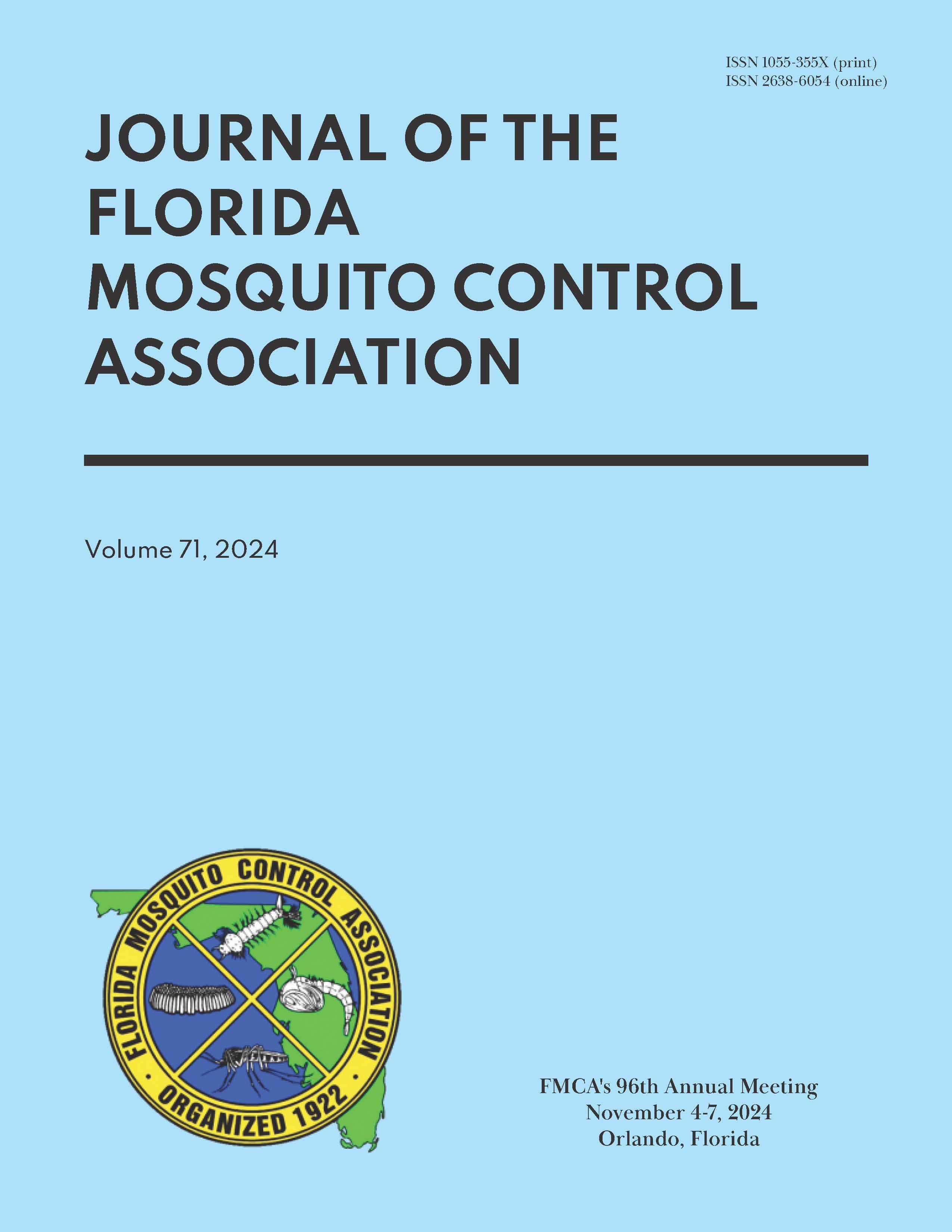THE TEMPORAL PATTERN OF AEDES SOLLICITANS AND AEDES TAENIORHYNCHUS IN AN INTERTIDAL WETLAND SYSTEM, NORTHEASTERN FLORIDA: A LITERATURE REVIEW
DOI:
https://doi.org/10.32473/jfmca.71.1.135289Keywords:
salt marsh mosquitoes, population dynamics, wetlands, mosquito ecologyAbstract
Temporal and spatial patterns of mosquito species distributions are influenced by weather conditions and climate, changes in water quality, and many other factors. Aedes taeniorhynchus and Aedes sollicitans are common salt marsh mosquitoes that cause many nuisance problems for human populations. St. Johns County (north-eastern Florida) has, over the past decades, been one of the fastest growing counties in the U.S.A. This is related to changes in land use and land cover, and local climate variations. It has been recently noticed that two species, Ae. taeniorhynchus and Ae. sollicitans, switch their temporal pattern in St. Johns County. To explore factors influencing potential changes between the temporal distribution of the two species of salt marsh mosquitoes, a literature search was conducted. Based on the literature, there are many factors influencing the potential species switch or temporal patterns of the two species. These include meteorological and tidal patterns as well as land use and land cover changes. The results of the literature analysis indicate that the switch and change in temporal pattern between the two species needs to be further explored, especially with respect to temperature, tidal flooding, water quality (especially salinity), sea level rise and land use/cover.
Downloads
Published
Issue
Section
License
Copyright (c) 2024 Patricia Dale, Rui-De Xue

This work is licensed under a Creative Commons Attribution-NonCommercial 4.0 International License.

